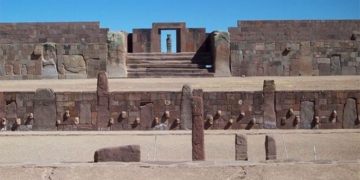The detoxifying and antibacterial benefits of ozone generators are real, but whether the devices available on the market fulfill these functions is a significant concern.
In an increasingly polluted environment, the risk of pesticide contamination in fruits and vegetables remains a serious issue, prompting many people to seek ozone generators for self-treatment.
In response to this demand, manufacturers have launched a variety of ozone generators onto the market. For just a few hundred thousand VND, you can own a device to “sanitize, kill bacteria, and detoxify in bedrooms, cars, workplaces, and even wash vegetables to eliminate pesticide residues and growth stimulants.”
According to manufacturer guidelines, if you intend to wash vegetables, you should attach a plastic tube to immerse in a basin of water while saturating it with ozone; if you want to eliminate odors or kill bacteria, simply release this gas into a room or vehicle to “remove nearly 100% of pesticides from fruits and vegetables, as well as mold, parasites, and fungi,” or to “kill bacteria, germs, and eliminate odors, creating fresh and invigorating air.”
In Ho Chi Minh City, various types of ozone generators for home use are widely available, including both imported and locally assembled units. The majority are from China, priced between 500,000 to 800,000 VND; Taiwanese models range from 1 to 1.3 million VND; while those from Japan, Australia, and South Korea are priced between 2.2 to 4.5 million VND. German and French models start at over 10 million VND. Industry insiders report that the cheaper models are selling particularly well.
Experts indicate that while generating ozone is relatively simple, achieving ozone that meets safety standards is far more challenging. Dr. Phan Thanh Thao from the Organic Chemistry Department at the Ho Chi Minh City Institute of Chemical Technology explains that ozone is created by passing a dry gas through two electrodes (with a voltage exceeding 4,000 V), causing the dry gas to ionize, split, and combine with molecular oxygen to form ozone. However, the effectiveness of the product depends on its power; low-efficiency machines will not work effectively. Unfortunately, most machines on the market use natural air with high humidity, which is unsuitable for ozone production.
Engineer Nguyen Dang Luong from the Applied Electronics Department of the National Center for Natural Science and Technology states that most of the low-cost machines sold on the market do not include dehumidifying equipment due to its high cost (which can account for up to 50% of the machine’s price). Ozone generators lacking dehumidification equipment can be very hazardous for users. The output ozone concentration is significantly reduced, while nitrogen oxide levels may increase, posing respiratory risks. When using these machines for odor removal or disinfection in a room, caution is essential, as the actual ozone concentration produced is often unknown. Excess ozone can harm respiratory cells (from the trachea to the alveoli); conversely, insufficient ozone levels may not effectively kill bacteria or detoxify.
Additionally, experts in the field state that the effectiveness of ozone generators depends on ozone concentration and treatment duration. The discharge system must operate at a specific frequency, the efficiency must meet requirements, and the materials used to generate the electric field must be technically sound. Generally, high-quality products require advanced technology, precise materials, and appropriate production efficiency, leading to a higher price point.
An investigation from various regulatory agencies reveals that this product category currently remains outside of regulatory control. According to the Ho Chi Minh City Department of Standards, Measurement, and Quality, there have been no inspections as this product does not fall within the quality control scope established by the Ministry of Science and Technology. The Prime Minister’s Decision 50, dated March 7, which lists products and goods subject to quality inspection, does not include this type of equipment.
Self-Inspection Recommended When Considering Use Experts advise: When purchasing a machine, opt for one that includes dehumidifying equipment. To check whether the machine has dehumidifying capabilities, you can bubble ozone gas into water to measure the pH or ask a specialized agency to assist. If the machine is of good quality, the pH will be neutral; a low pH indicates poor quality. You can also use pH test paper; if the machine is good (neutral pH), the paper will remain yellow; otherwise, it will change to pink or red. The amount of ozone produced (in grams per hour) must be measured with specialized equipment. |




















































